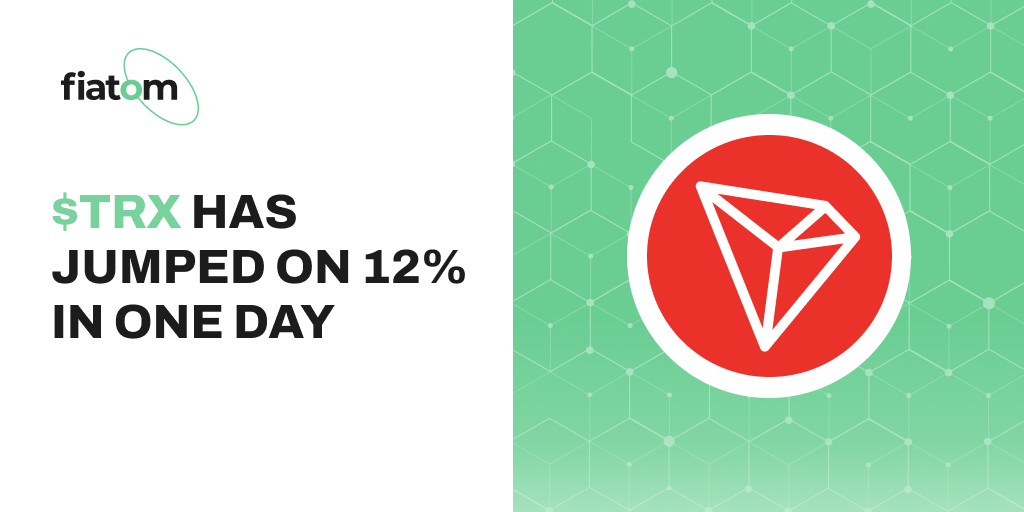On August 21, TRON (TRX) saw a significant price surge, jumping by 10.6% to hit $0.1594, the highest level since April 2021. This rise was accompanied by a massive 121% increase in daily trading volume, which soared to nearly $1.92 trillion. This dramatic uptick has drawn attention to TRON’s recent performance, with many speculating about the factors driving this rally and what it could mean for the future price of TRON.
TRON. What is it? How does it work?
TRON (TRX) is the native cryptocurrency of the TRON blockchain platform, which powers decentralized applications (dApps). As a key player in the crypto market, TRX ranks within the top 20 cryptocurrencies by market capitalization. This makes TRON a significant force in the industry, known for its high scalability, low transaction fees, and fast processing times. The platform’s robust ecosystem, which supports a variety of dApps including those in decentralized finance (DeFi) and gaming, highlights its growing importance and influence in the blockchain space.
The architecture of the TRON blockchain is divided into three key layers:
Core Layer: This includes crucial components like the consensus modules, smart contracts, the TRON Virtual Machine (TVM), and account management systems. These elements are essential for the security and functionality of the TRON network.
Application Layer: This layer is utilized by developers to build decentralized applications (dApps) on the TRON platform. It provides a robust environment for the creation and deployment of a wide range of dApps, enhancing TRON’s role in the blockchain ecosystem.
Storage Layer: Dedicated to storing network blocks, blockchain data segmentation, and state data management, this layer ensures that all information related to transactions and smart contracts is securely stored and efficiently managed.
TRON employs the Delegated Proof-of-Stake (DPoS) consensus algorithm, a system that was first popularized by its competitor, EOS. In the TRON network, blocks are generated every 3 seconds, and the blockchain can handle up to 2,000 transactions per second, making it one of the fastest in the industry.
Transaction validation and block generation are carried out by 27 “Super Representatives,” who act as validators. These Super Representatives are elected from hundreds of node operators, ensuring a decentralized approach to network security and governance. Their role is pivotal in maintaining the high performance and reliability of the TRON blockchain.
The TRON blockchain operates with three types of nodes, each serving a specific function:
Super Nodes: These are the candidates for the Super Representatives role. Super Nodes play a critical role in the TRON network by participating in the consensus process, helping to validate transactions and create new blocks.
Full Nodes: These nodes are responsible for broadcasting transactions and synchronizing with the blockchain. Full Nodes ensure that all data is up-to-date and that the network remains cohesive, facilitating smooth transaction processing across the TRON ecosystem.
Solidity Nodes: These nodes synchronize blocks from Full Nodes and provide APIs for third-party applications to access the blockchain. Solidity Nodes are crucial for enabling external applications to interact with the TRON blockchain, making them essential for developers and services that require real-time data and functionality from the TRON network.
This structure highlights TRON’s commitment to a robust and decentralized blockchain environment, where each type of node plays a vital role in maintaining the network’s performance, security, and accessibility.
TRX serves as the primary unit of account within the TRON blockchain. It is used to pay transaction fees and to reward stake participants as well as Super Representatives for validating blocks. This makes TRX integral to the network’s operation and its decentralized governance structure.
When users lock up TRX, they receive Tron Power (TP) tokens in return. These TP tokens grant voting rights in the selection of Super Representatives and in decision-making processes within the decentralized autonomous organization, Tron DAO, which governs the network.
Beyond its core functions in the TRON blockchain, TRX can also be used as a payment method for various transactions and purchases. It is accepted by many online services and can be used through prepaid plastic cards, making it versatile in both the blockchain ecosystem and broader digital economy.
Why is TRX Becoming the Crypto to Watch?
The driving force behind this surge is the launch of SunPump, TRON’s strategic move to tap into the booming memecoin trend. With over 18,000 memecoins created on SunPump generating around $1.12 million in revenue, TRON has demonstrated its ability to adapt to new market trends and attract attention. Additionally, TRON founder Justin Sun’s engagement with the community, hinting at major meme leaders potentially moving to the TRON network, has further fueled interest.
This momentum has not only increased transaction volumes by 1045% since SunPump’s beta launch but also boosted daily active addresses by 10%. As TRON continues to innovate and draw in new users, TRX is becoming an increasingly attractive cryptocurrency, offering both strong utility and growth potential in the evolving crypto landscape.
Don’t miss out on the opportunity to be part of TRON’s expanding ecosystem and potential future gains. Seize this moment to buy $TRX with Fiatom, and secure your place in the future of TRON’s dynamic and rapidly evolving blockchain.

